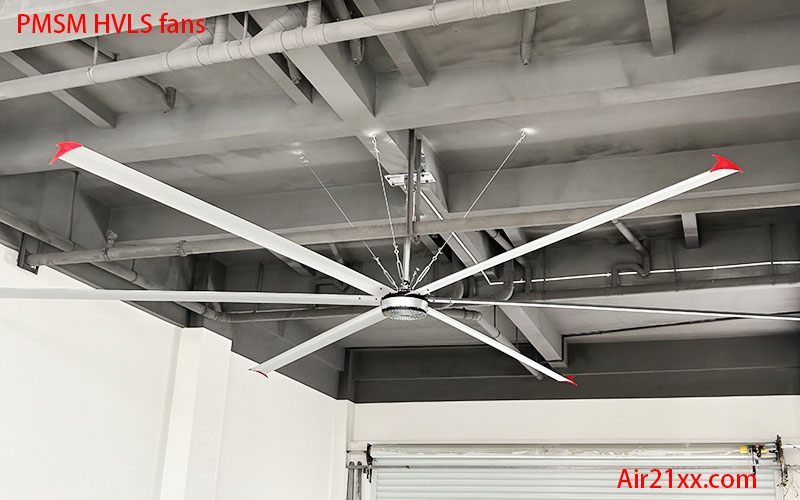
The manufacturing of PMSM HVLS (High Volume, Low Speed) industrial fans is a process that involves precision engineering and design, aimed at creating equipment that can efficiently move large volumes of air while maintaining low energy consumption and noise levels. Here is a summary of the HVLS industrial fan manufacturing process:

Design Phase of PMSM HVLS fans
- Requirements Analysis: Manufacturers first analyze the needs of the target market to determine the intended use of the fan, such as in warehouses, sports arenas, or factories.
- Conceptual Design: The design team creates initial designs based on the requirements, considering the size, shape, materials, and performance parameters of the fan.
- Simulation Testing: Computer-aided design (CAD) software is used for simulation testing to optimize the fan's airflow efficiency and structural stability.
Material Selection
- Fan Blades: Lightweight yet strong materials such as aluminum alloys or composite materials are typically used to ensure the durability and efficiency of the blades during low-speed rotation.
- Motor and Drive System: High-performance, energy-efficient motors are selected, along with reliable drive systems, to ensure the long-term stable operation of the fan.
- Frame and Housing: Corrosion-resistant materials are used to manufacture the frame and housing to withstand environmental factors such as humidity and chemicals.
Manufacturing Process of PMSM HVLS fans
- Blade Manufacturing: Precise machining techniques, such as CNC cutting or molding, are used to fabricate blades to exact dimensions.
- Motor Assembly: The motor components are assembled and tested for performance to ensure they meet efficiency and safety standards.
- Final Assembly: The blades are secured to the motor shaft and mounted within the frame, ensuring precise fit and balance of all components.
Quality Control
- Safety Testing: Fans undergo safety testing, including electrical safety and structural integrity tests.
- Performance Testing: The fan's airflow output, noise levels, and energy consumption are tested to ensure they meet design specifications.
- Durability Testing: Long-term operation conditions are simulated to assess the fan's durability and reliability.
Final Inspection and Packaging
- Final Inspection: The fan undergoes a final visual and functional inspection to ensure there are no defects.
- Packaging: Appropriate packaging materials are used to protect the fan during transportation to prevent damage.
After-Sales Service
- User Manuals and Installation Guides: Detailed user manuals and installation guides are provided to assist users in correctly installing and maintaining the fan.
- Technical Support: Manufacturers offer technical support and repair services to ensure the long-term performance of the fan.
The manufacturing of HVLS industrial fans is a comprehensive process that involves innovative design, the selection of high-quality materials, precise manufacturing techniques, strict quality control, and comprehensive after-sales service. These factors collectively ensure that HVLS fans can provide an efficient, reliable, and economical ventilation solution in various industrial and commercial environments.
https://air21xx.com
HVLS Industrial Fan Manufacturing
